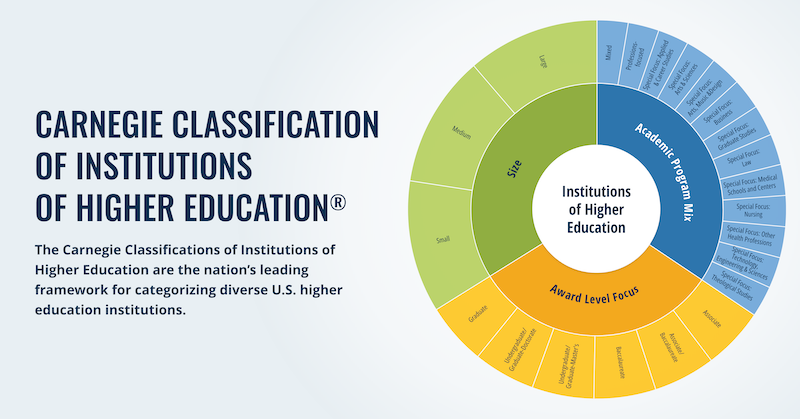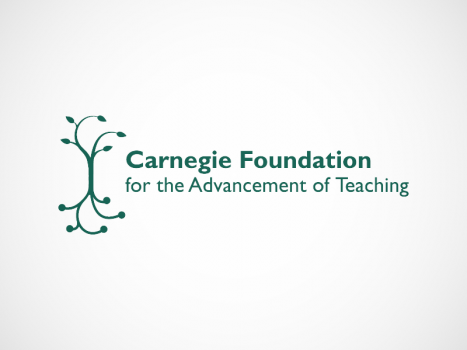Over the past five years, the Carnegie Foundation for the Advancement of Teaching has launched a set of three Networked Improvement Communities (NICs). We have played roles in the launch and support of two NICs in particular, the Building a Teaching Effectiveness Network and the Student Agency Improvement Community.
NICs are scientific learning communities distinguished by four essential characteristics. They are:
- focused on a well specified common aim;
- guided by a deep understanding of the problem and the system that produces it, and a shared theory of how to improve it;
- disciplined by the rigor of improvement research;
- coordinated to accelerate the development, testing, and refinement of interventions and their rapid diffusion out into the field, as well as their effective integration into varied educational contexts.
These characteristics create conditions under which organizations can learn from their own practices and benefit from innovations from both within and outside of their organization to systematically address high-leverage problems.
Through the initiation and development of several NICs, Carnegie has gained some insight into what it takes to spur improvement activity in networks:
Start with a high-leverage problem of practice
A high-leverage problem of practice is an issue that, if addressed, can disrupt status quo practices in an organization and render improvements throughout the system. This is a compelling problem area that, if solved, will propel the organization toward achieving its core mission. Long-term leadership and stakeholder commitment to solving this problem is critical to the success of the NIC, and the determination to work on a recognized high-leverage problem (as perhaps one that the organization has struggled with for a while) can do much to evoke that commitment and will. Moreover, the process for selecting and messaging the NIC’s high-leverage problem needs to be transparent and evidence-based.
A high-leverage problem of practice is an issue that, if addressed, can disrupt status quo practices in an organization and render improvements throughout the system.
Build on work already being done
With more rigorous standards, evolving policy demands, and tight budgets, school personnel are striving to realize increasingly ambitious objectives with limited resources. The desire to apply improvement science in networks often outstrips school personnel’s capacity to conduct such work. To introduce improvement work into a district, we would recommend beginning the improvement activity in an existing team or learning community. Infusing improvement methods into existing collaborative structures (e.g., partnerships, meeting structures, conceptual framings) adds capacity to work already being done as opposed to adding “one more thing” to the work of educators who are already operating at full capacity.
Assemble a diverse team
We have found it efficient to start improvement work in existing collaborative structures, but it is also true that solving high-leverage problems in schools will require a range of perspectives and levels of expertise. Given the interdependencies of processes in complex systems, often the processes of improvement will uncover previously overlooked drivers of the problem. It is not uncommon for new team-members to be added as the improvement work evolves. Organizations can be hierarchical, but in NICs, each member brings an essential perspective to solving the problem at hand. In fact, in improvement work, it is often the case that those workers closest to the “front line” are those with the best ideas about how to solve the problem. NICs can foster a spirit of co-development by demonstrating openness to feedback and rapidly integrating and testing member ideas in the network.
Early wins will also help to build will for the work in the organization.
Provide access to improvement guidance
Improvement science offers a set of new frameworks and methods for approaching work. As with most newly acquired skills, users will struggle in the process of integrating this approach into real-life contexts. It is imperative to ensure that just-in-time feedback and support is provided reliably in order to scaffold learning and help members see the value in the improvement work. Early wins will also help to build will for the work in the organization.
Balance in-person and virtual communication
Launching a network is best done in an in-person convening of network members and stakeholders. Often convenings can galvanize enthusiasm around solving the high-leverage problem and build momentum for the work. However, it is often the case that that enthusiasm can wane when members return to face the challenges of their daily routines and momentum often flags. A collaborative online platform can foster continued communication to build upon the sense of community garnered at the first convening. It can also provide for the sharing and spread of what is learned through ongoing improvement efforts.
Certain conditions are obvious prerequisites for seeing improvement work gain traction in practice: building the improvement capabilities of professionals through training and ongoing coaching, for example, or creating the infrastructural capacity by establishing a supporting Hub that provides supports for improvement science, collaborative work, knowledge management, etc. The items introduced here have emerged in our work as more particular issues that require attentions if improvement work is to be pursued in a manner that is deep, widespread, and enduring.
July 24, 2014
In designing two alternative mathematics pathways for students taking college developmental math classes, Carnegie has acknowledged student baggage as one of the key drivers that must be addressed to fully support student success.
July 29, 2014
Carnegie’s work rests on the assumption that we need to increase the rate of learning to reach higher educational aspirations. A key component of that vision is building on others' learning.







